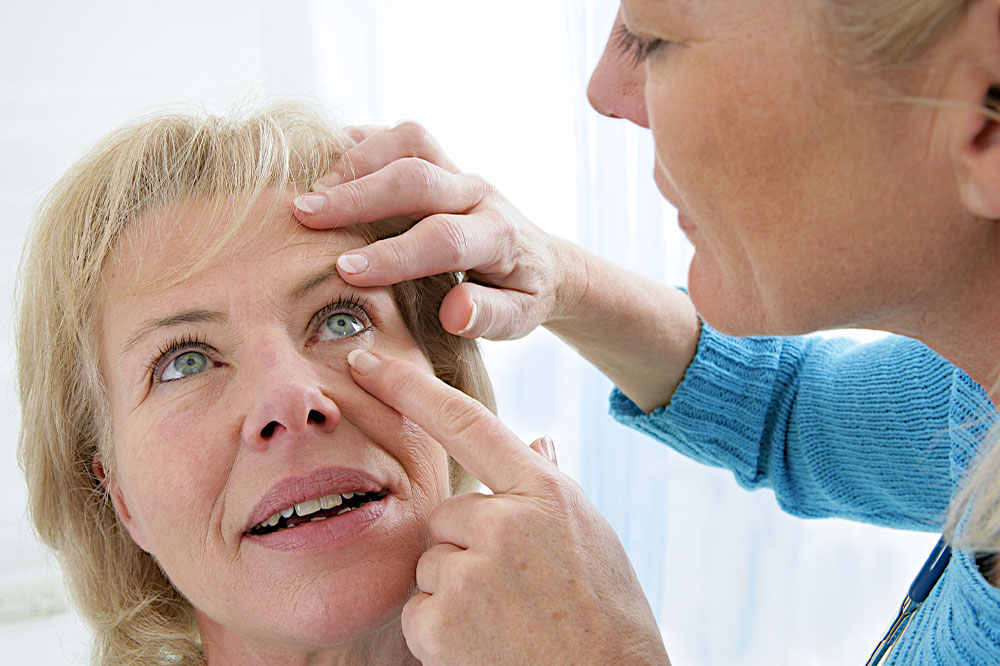
Signs, causes, and management of thyroid eye disease
Thyroid eye disease (TED), also known as thyroid-related ophthalmopathy (TRO), is an autoimmune condition that triggers the immune system. As a result, inflammation occurs in the socket of the eyes, which affects the muscles responsible for eye movement. The fatty tissues behind the eyes are also affected, leading to other complications. So, the eyes are pushed forward (forming a bulge), leading to symptoms like double vision, decreased vision, red eyelids, and eye irritation.
Symptoms of thyroid eye disease
The signs and symptoms of TED differ from person to person. Besides, the intensity of the symptoms can range from mild to highly severe. Sometimes, the symptoms can cause pain and disfigurement of the eye socket, which can eventually lead to loss of eyesight over time. Aside from this, the symptoms do not change substantially over the years for some people. While for others, the symptoms may become worse or even improve as years go by. In some cases, a person with TED may experience recurring episodes of worsening symptoms followed by a period of improvement or remission. Some of the most common symptoms of TED to watch out for include the following.
- Bags under the eyes
- Blurred or double vision
- Change in the appearance of the eye – bulging or as if one is staring continuously
- Difficulty in moving the eyes
- Dry or watery eyes
- Gritty feeling in the eyes
- Low tolerance to bright lights
- Pain inside or behind the eye, especially when looking up, down, or sideways
- Redness of the lids and eyes
- Swelling or fullness in one or both upper eyelids
Sometimes, thyroid eye disease can become quite severe and cause the following symptoms. In such cases, it is best to consult a doctor as soon as possible.
- There is blurred vision that does not improve by blinking or covering either eye
- The eyes may perceive colors differently as they may appear less bright when compared with the other
- There is double vision
- The symptoms worsen quickly over a few days or weeks
Since most of these symptoms are quite similar to other eye diseases, such as hay fever, conjunctivitis, or allergies, TED can be difficult to diagnose. In fact, many people with TED often receive a correct prognosis only after a few months. However, some signs can help determine whether the symptoms are due to TED or something else.
- The symptoms do not occur during the hay fever season
- The symptoms include severe aches or pain in the eyes, especially when there is eye movement
Causes
For most autoimmune health disorders, including thyroid eye diseases, there are no known exact causes. However, a few risk factors are known to increase the chances of being diagnosed with this eye disease. Usually, autoimmune conditions develop when the immune system attacks healthy tissues and cells that it mistakenly perceives as threats. So, the production of white blood cells increases in the body to defend against the intruders. However, the excess of white blood cells invariably increases the level of inflammation in the body. In the case of thyroid eye disease, this inflammation occurs in the eyes, triggering all known symptoms. Apart from this, thyroid eye disease may also develop due to overactive or underactive thyroid glands.
Management options
Managing and treating thyroid eye disease involves relieving symptoms and preventing them from recurring. To achieve this, a healthcare provider may recommend one or more of these options.
Over-the-counter treatments
This involves the use of eye drops that provide relief from dryness and irritation. These solutions help in lubricating the eyes and alleviating a lot of discomfort.
Lifestyle changes and home remedies
Avoiding foods that increase inflammation is considered one of the most crucial lifestyle changes one can make. Also, learning how to manage stress can help lower inflammation levels. There are several ways to alleviate the pain and discomfort associated with the eye condition and inflammation. For instance, one can apply cool compresses to the eyes, wear sunglasses to protect against UV radiation, and keep the head higher than the body when lying down. Taping the eyelids when sleeping can also help, provided a health expert recommends it. Since TED can make it difficult to close the eyes completely, it can lead to corneal ulcers and dryness, leading to vision loss. To avoid this, taping the eyelids can work well. In addition, one can also wear glasses with prisms or use patches on one eye to lower double vision. It would also be useful to control thyroid levels by regularly monitoring.
Surgery
In severe cases, surgery might be needed to treat the symptoms of TED. Eyelid surgery is recommended, where the procedure involves correcting the eyelids that may have become tight due to TED. As a result, the cornea is covered, preventing corneal damage. Apart from this, a person may also undergo eye muscle surgery, where the eye muscles are moved to improve double vision. Finally, the symptoms of TED can be further improved with orbital decompression surgery. This procedure helps to take away the pressure from the optic nerve by removing excess tissues and making the eye socket large.
Radiation therapy
This procedure is usually suggested to treat the inflammation and irritation of the eyes caused by TED.




